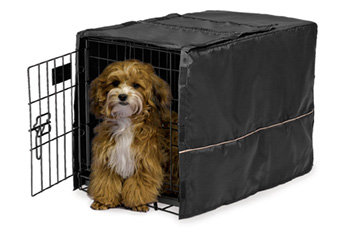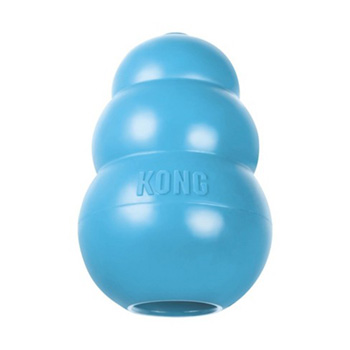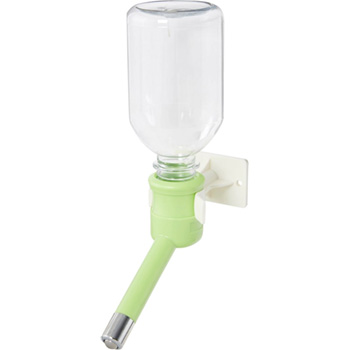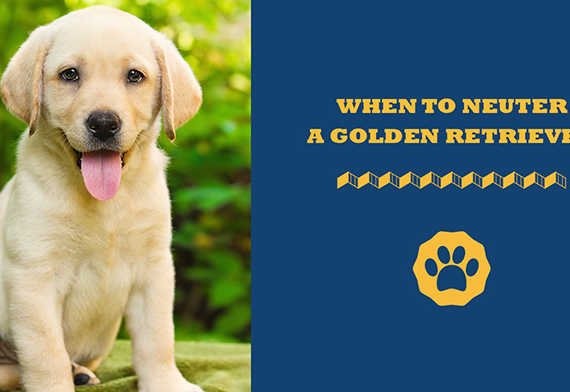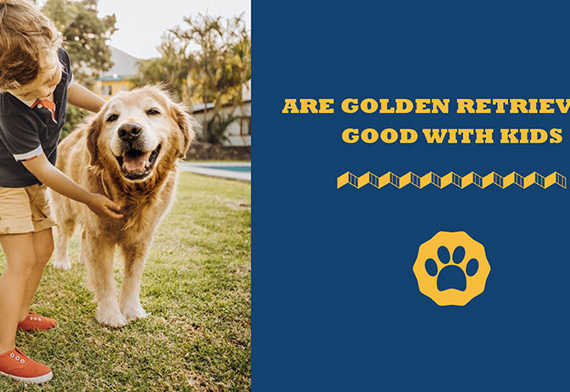Updated: February 13th, 2023
This article contains affiliate links. Read the full disclosure here.
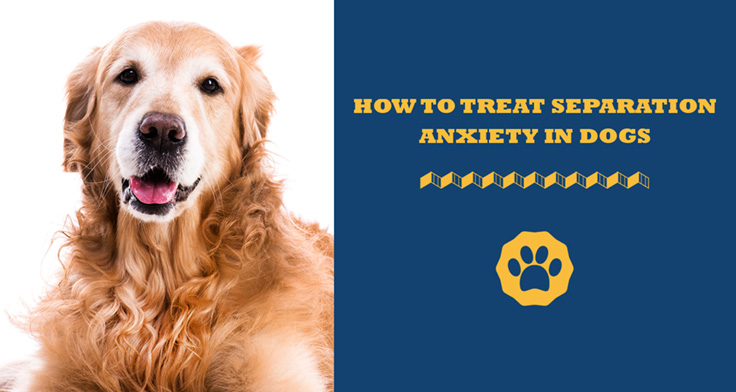
A hot topic amongst dog owners these days is how to treat separation anxiety in dogs. All of a sudden, their best furry friend is behaving erratically, eating things they normally wouldn’t, making messes even though they are house trained, and being aggressive.
We live in a world that is ever-changing. For example, the global pandemic forced us to consider a ‘new normal’ being at home for days on end, only for that all to suddenly change and reinstate our ‘old normal’ by going back to the office, etc.
As a result, for many of us, our dogs have gotten used to us being at home all of the time. Maybe you only adopted your dog during the pandemic, and all they have known is 24-hour love and affection. Suddenly, you are leaving the house for several hours at a time, and they are experiencing anxiety.
Unfortunately, dealing with these sudden behavioral issues has caused many people to abandon or surrender their animals because they do not know how to properly address them. Separation anxiety can look like bad behavior, but fortunately, it can be treated and even prevented!
Treating and preventing separation anxiety will take a lot of time from both you and your furry friend as well as plenty of patience. Let’s look at what you can do to ease your pup’s nervousness below.
Best Products For Dogs With Separation Anxiety
I have carefully considered what separation anxiety means to your dog and researched the best products to help you prevent and treat it:
-
KING KALM™ CBD 300mg - LargeBest Supplement
-
MidWest Dog Crate Cover, Privacy Dog Crate CoverBest Crate Cover
-
Calmeroos Puppy Heartbeat ToyBest Companion Toy
-
KONG Puppy Dog ToyBest Mental Exercise Toy
-
Choco Nose No-Drip Dog & Cat Water BottleBest Mental Exercise Hydration Station
| IMAGE | PRODUCT | ||
|---|---|---|---|
|
Best Supplement
|
Best Supplement
|
|
CHECK PRICE → |
|
Best Crate Cover
|
Best Crate Cover
|
|
CHECK PRICE → |
|
Best Companion Toy
|
Best Companion Toy
|
|
CHECK PRICE → |
|
Best Mental Exercise Toy
|
Best Mental Exercise Toy
|
|
CHECK PRICE → |
|
Best Mental Exercise Hydration Station
|
Best Mental Exercise Hydration Station
|
|
CHECK PRICE → |
What Is Separation Anxiety?
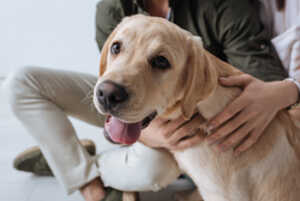
Separation anxiety is more than normal anxiety or fear of loud noises, new people, or strange toys. Separation anxiety is more akin to a human panic attack than just mild, everyday anxiousness.
If they have separation anxiety, your dog will experience a heightened feeling of fight-or-flight when you leave the house for hours, or even a couple of minutes.
This is because they are suddenly feeling alone and vulnerable, mainly due to suddenly losing their familiar pack structure and the support of their best friend.
You may have noticed your dog bark a lot while you collect the mail or pop down the garden to chat to a neighbor. That is pretty normal behavior, especially if your dog is distracted by a perceived threat, that neighbor or a cat!
However, if you have just left the house for a minute or two and return to your dog barking madly, urinating in a doorway, or salivating excessively, then they may be experiencing separation anxiety.
What Causes Separation Anxiety In Dogs?
There are many causes of separation anxiety in dogs, the main one being a sudden change in their home structure, which makes them feel vulnerable.
Many situations can trigger your dog’s separation anxiety. For example:
- Family members leaving for school
- Children moving away to college or leaving home
- Parent or other family members passing away
- Recent divorce or death in the family
- Moving homes
- You or a family member leaving for work
Linked with these sudden changes, there may be historical reasons your dog develops separation anxiety.
Signs And Symptoms Of Separation Anxiety
As previously mentioned, many of the signs and symptoms of separation anxiety can be mistakenly labeled as ‘bad behavior,’ and many dogs are abandoned, surrendered, or put down because their owners give up on them.
Look out for their pattern of symptoms that coincides with you not being at home. If you are really worried about them, then you can install a camera to monitor them while you are away.
The following are common signs and symptoms of separation anxiety in dogs:
- Excessive barking or howling at ‘nothing’
- Chewing or digging around entrance ways, doors, and windows
- Urinating and defecating indoors even if they are house trained
- Panting and drooling without activity
- Excessive salivation
- Escape attempts that often lead to injury
- Pacing in a pattern around entrance ways and whining
- Defecating and then eating all or some of it (coprophagia)
- Chewing on themselves to the point of injury
Treating Dogs With Separation Anxiety
You can prevent separation anxiety from happening to a certain degree by practicing a number of different techniques from the time your dog is a puppy.
However, not every dog is so fortunate that prevention techniques work. Thankfully, there are still plenty of effective treatment methods you can use to treat mild to severe separation anxiety in the home.
How To Prevent Separation Anxiety
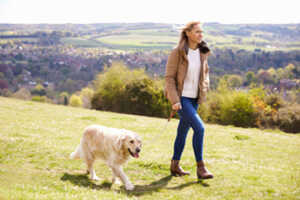
These are strategies that need to be implemented from a puppy age or as soon as you come into possession of the dog. This will help them live a calmer, more orderly life and prevent separation anxiety from setting in.
Plenty of exercise will mean your dog’s body is physically relaxed and has no built up nervous energy. If you are not sure how to physically exercise your dog properly, check out our article on running with a Golden retriever.
Crate training your dog from the time when they are a puppy can greatly reduce the chance of separation anxiety arising as they have a safe space within the house to go to to be alone whether you are at home or not. Check out the 5 best wire crates here.
Keeping your dog mentally stimulated is important. If they are in an empty crate or house from the time you leave until you get home after shopping or going to work, then they will become bored, which can turn into separation anxiety and lead to destructive behaviors.
Fill your dog’s crate, or a room in your home, with mentally stimulating toys and puzzles so that they are never bored. Make sure they are comfortable and calm in their safe space.
Get your puppy used to being alone in a separate room of the home while you are there. They should feel comfortable while they are alone.
Finally, do not encourage very clingy behavior like carrying them from room to room or always calling them when you leave a room.
How To Treat Active Separation Anxiety
If you have determined your dog has separation anxiety, then make sure all of the preventative measures are in place first and then move on to treating it. Be patient, as it is a long process of desentizing and counterconditioning!
Desensitize them to the exiting process. Your exiting process may be to get your shoes and put them on in the living room before leaving the house. Go through your normal exiting process of grabbing your shoes, grabbing your keys, and then just sitting down or moving to another room.
This will desensitize your dog to the process you go about to leave them. Never get angry if they start ‘behaving badly.’ You can randomly go through your exiting process and then cook a meal or watch some TV. Your dog will learn to stop associating this process with you leaving.
Next, do not make a big deal of your coming or going. I know this can be very difficult. All I want to do when I come home from work is rush over to my dogs for a snuggle and some love. Resist the urge! This will help them not make a big deal of it.
Also, get your dog used to closed doors in the home. Go to the bathroom, close the door, and get them to sit or stay outside and be used to your physical absence. Then, move to another door like your bedroom door and practice that until they are not displaying anxious behaviors.
Then move up to try exterior doors to your home. Stay just outside the door and practice for 30 seconds, then a minute, then 5, 10, 15, etc. until your pupper is feeling calm knowing you are just outside the door.
Again, remember that this process is usually very slow. Most of your dog’s anxious behaviors will appear in the first 40 minutes of you being gone, so take it slow and watch them carefully.
Once 40 minutes is achieved, try and distract them with some puzzles, toys, and treats in another part of the home while you are outside the door. Always remember to never make a big deal of your coming and going, even if you are just practicing.
Before you start leaving the home, play with your dog so that their heart rate goes up and they are physically tired. Hide some treats or kibble around the house so that they can go and hunt while you are away if they are not put in a crate.
If your dog has severe separation anxiety, some experts in the field recommend using medication or a natural calming supplement to help ease your dog’s panic around your absence. Many pet parents use CBD for dogs with anxiety as an alternative treatment.
FAQs About Dogs With Separation Anxiety
Are there specific dog breeds that are prone to separation anxiety?
Dogs that are more needy or reliant on a pack structure will generally develop separation anxiety easier than other breeds who are more independent.
Dogs like Golden retrievers, huskies, boxers, Boerbulls, Rottweilers, and German shepherds are all more likely to develop separation anxiety from their owners or other household members.
How long does it take to treat separation anxiety?
The length of treatment for active separation anxiety will depend on your dog and how severe the case is. It will also depend on how devoted and diligent you are to treat it.
If you are committed to helping your dog every day, multiple times a day, then you should see a marked change in their separation anxiety after a week. Continue with the treatment, and eventually, you will not have to worry about them.
Do I need to take my dog to a professional to get them treated?
You do not necessarily need to take your dog to a professional behaviorist or vet to get them treated for separation anxiety. You are more than capable of helping your dog be and remain calm around being alone.
All it takes is the knowledge to treat them, which you have hopefully gained through reading this article, and the patience to work with them everyday, multiple times a day, until you have overcome the separation anxiety together.
Calmly Wagging Away…
Many people wonder how to treat separation anxiety in their dogs, as it is distressing for the human as well as the doggo when they are upset and sad.
Leaving separation anxiety untreated endangers your dog’s health through risky behavior as well as your own mental health if you feel guilty every time you need to leave the house.
The best treatment is prevention, so training your puppy to be happy alone and independent is important. Keep your dog mentally and physically engaged while you are there with them and while you are away to keep them happy and calm.


